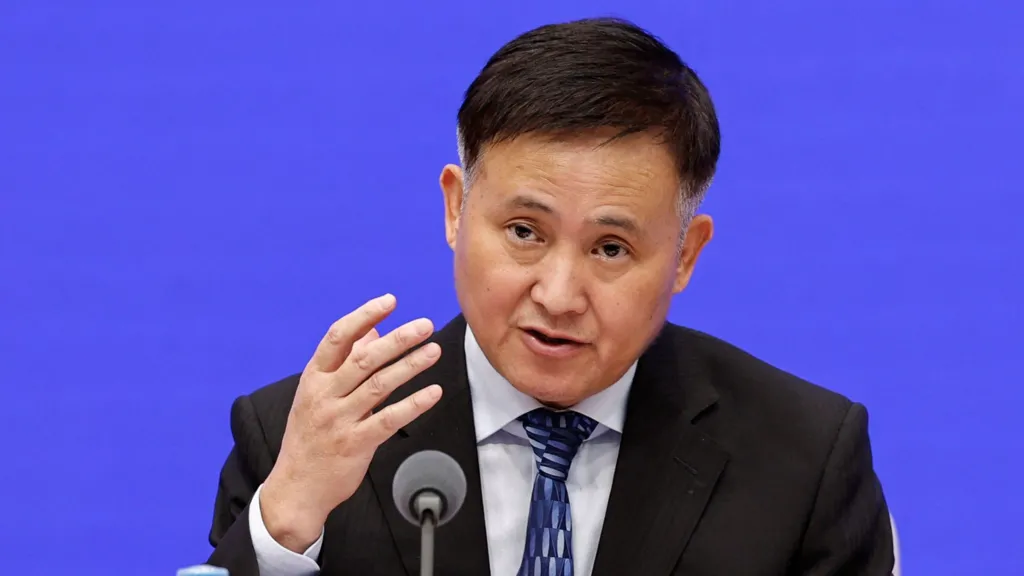China Introduces Comprehensive Measures to Revitalize Economy
3 min read
People's Bank of China (PBOC) Governor Pan Gongsheng announced plans to lower borrowing costs and allow banks to increase their lending.

People's Bank of China (PBOC) Governor Pan Gongsheng announced plans to lower borrowing costs and allow banks to increase their lending.
In a significant effort to rejuvenate its struggling economy, China’s central bank has announced a comprehensive package of measures aimed at stimulating growth. The People’s Bank of China (PBOC), led by Governor Pan Gongsheng, detailed plans to reduce borrowing costs and encourage banks to increase their lending activities.
This announcement comes in the wake of disappointing economic data that has raised concerns about China’s ability to achieve its 5% growth target for the year. The recent trends have led many analysts to speculate that the world’s second-largest economy may fall short of this benchmark.
Following Governor Pan’s announcement, stock markets across Asia reacted positively, with share prices surging. During a rare press conference attended by officials from two other financial regulatory bodies, Pan revealed that the central bank would lower the reserve requirement ratios (RRR) for banks. This adjustment means that banks will be required to hold less cash in reserve, allowing them to lend more freely.
The initial cut to the RRR will be half a percentage point, which is projected to release approximately 1 trillion yuan (around $142 billion or £106 billion) into the economy. Pan hinted that further reductions might be considered later in the year, depending on economic conditions.
In addition to these banking measures, the PBOC has introduced initiatives specifically targeting the beleaguered real estate sector. The real estate market has faced a significant downturn since 2021, marked by the collapse of several developers and a large inventory of unsold homes and unfinished projects. To alleviate some of the pressures in this sector, the central bank will reduce interest rates on existing mortgages and lower the minimum down payment requirement for all types of homes to 15%.
These actions come shortly after the U.S. Federal Reserve implemented its first interest rate cut in more than four years, marking a significant shift in monetary policy. The Fed’s decision further fueled investor optimism, contributing to the positive performance of stock markets. In China, the major stock indexes in Shanghai and Hong Kong closed the day more than 4% higher following the announcements.
The combination of these measures reflects a proactive approach by the Chinese government to counteract the economic slowdown and restore confidence in both consumers and investors. Analysts believe that by enhancing liquidity in the banking system and stimulating the real estate market, China can create a more favorable environment for economic recovery.
The recent economic challenges faced by China have highlighted the vulnerabilities within its economic structure, particularly in the property sector, which is a significant driver of growth. With many developers struggling, the government is under pressure to stabilize the market and support recovery.
The measures announced by the PBOC are part of a broader strategy to ensure sustained economic momentum. By reducing borrowing costs and facilitating greater access to credit, the government aims to foster investment and consumption, crucial components for revitalizing growth.
While the measures have been welcomed by markets, the true impact on the economy will depend on their implementation and the broader global economic environment. Experts note that external factors, including geopolitical tensions and global economic conditions, will also play a critical role in shaping China’s economic trajectory.
Overall, the PBOC’s new initiatives signify a crucial step toward addressing the current economic challenges and re-establishing a path toward stable growth. As China navigates these complexities, the effectiveness of these measures will be closely monitored both domestically and internationally, with many hoping for a swift recovery that could benefit not just China but the global economy as well.